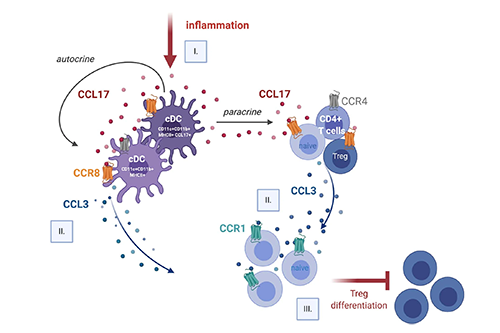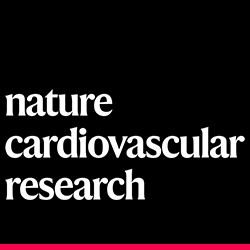A chronic inflammatory disease of the inner walls of blood vessels, atherosclerosis is responsible for many cardiovascular conditions. Dendritic cells, which act to recognize foreign substances in the body and mount an immune response, play an important role in the disease. They produce the signaling protein CCL17, a chemokine, which influences the activity and mobility of T cells, which track down infected cells in the body and attack the pathogens. However, CCL17 can also promote cardiovascular pathologies. People who suffer from cardiovascular diseases, or are particular susceptible to such diseases, have elevated levels of the signaling protein. In humans and mice, elevated CCL17 serum levels are associated with increased risk of atherosclerosis and inflammatory diseases of the cardiovascular and digestive systems. However, scientists have not yet managed to establish how exactly CCL17 produced by the dendritic cells regulates the T cells.

Pathway synopsis (I.) Sterile inflammation triggers the activation of a subset of cDCs, which respond by releasing CCL17. (II.) In turn, CCL17 binds to CCR8 on cDCs (autocrine) and on CD4+ T cells (paracrine) to stimulate an upregulation of CCL3 expression and release. (III.) Subsequently, CCL3 interacts with CCR1 on naïve T cells, thereby blocking the differentiation and expansion of Tregs. Taken from Döring, Y.et al. Nat Cardiovasc Res (2024)
A study just published in the journal Nature Cardiovascular Research has clarified important mechanisms in the signaling pathways involved. “We know from our previous work that a genetic deficiency or an antibody blockade of CCL17 impedes the progress of atherosclerosis,” says IPEK director Christian Weber. Before now, only one signal receptor was known to contribute to the recruitment and functions of T cells. If this receptor is lacking, however, the body is not protected from the negative effects of CCL17, as Weber’s team was able to demonstrate in a mouse study. Mice that did not possess the receptor in question continued to have the same extent of disease driven by CCL17. If the signaling protein acted directly and exclusively on this receptor, then silencing it should have the same effects as the absence of CCL17.

